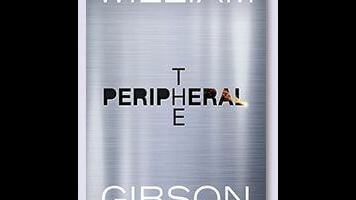William Gibson’s fiction is at its finest when taking bold leaps into the future, tackling challenging and inventive thematic territory. His novels, especially his culturally significant 1984 debut Neuromancer, evoke the anxieties of the age and speculate on how they might alter the future. Gibson’s fiction is based on taking risks, on fashioning worlds that are familiar enough to serve as a cultural critique, yet distant enough to provide hope for change.
Gibson’s latest novel, The Peripheral, certainly boasts certain themes and images that will be familiar both because of his previous work and because they seem ripped from the daily news. The novel takes place in two distinct time periods, before and after a disastrous economic collapse known as “the jackpot.” In pre-jackpot America, Flynne Fisher is filling in for her war-veteran brother Burton on a security detail inside a video game. While on the job, which involves flying a remote-controlled drone and keeping other paparazzi drones away from an ongoing party in an apartment building, Flynne witnesses the murder of a woman on a balcony. The woman, who’s “eaten alive, inside out” by some sort of tiny, flying “nanotech chainsaws,” was sharing the balcony with another man who seemed to know the murder was coming. Naturally, Flynne shrugs it off as just another morbid, gruesome moment in a video game, but later learns that her security detail may have been more real than she originally thought. She’s contacted by a man named Wilf Netherton, a publicist who lives in a future London decades after the jackpot, who has questions about the murdered girl, the sister of one of his clients—if this all sounds a bit convoluted, that’s because it is. Netherton—along with a team of investigators—is looking for the man Flynne saw on the balcony, who may be part of a larger ring of corruption and conspiracy. Using a “peripheral,” which is essentially an anthropomorphized drone, Flynne is able to go back and forth between the timelines in order to help with the investigation.
Details and description are scarce early on in the novel, with Gibson choosing purposely vague language and stilted syntax to suggest a hurried mood. It contributes to the lively pace of the first 100 pages or so, acting as a prologue of sorts to the action that comes later. Gibson paints a portrait of a not-so-distant America where the government can’t take care of its poorest people, and just about everyone in America, outside of, say, its top 1 percent, could be considered its poorest people. It’s a devastatingly familiar portrait: Disability checks struggle to cover health-care costs for vets, and jobs are hard to come by in general. The imagery in this section is inspired, but the frustratingly stuffy prose suffocates any poignant insights. Nearly every sentence, across numerous two-page chapters, is a slog, composed chiefly of inelegant exposition. Take, for instance, a passage that presents Flynne preparing for her trip into the game, gearing up with her brother’s tomahawk: “He called it an axe, not a tomahawk, but an axe was something you chopped wood with. She reached under, hooked it out, relieved to feel the weight. Didn’t need to open it, but she did. Case was widest at the top, allowing for the part you’d have chopped wood with… where the back of an axe would’ve been flat, like the face of a hammer, it was spiked, like a miniature blade but curved the other way.” Gibson goes on and on this way when establishing the world and characters of The Peripheral, the clunky prose a disservice to the otherwise insightful vision on display.
Still, at least these earlier portions carry some thematic weight and attempt to transplant current cultural anxieties around war and economics into a futuristic world. The rest of the novel delivers a rote noir procedural, filled with barely coherent time-travel mechanics. The time-travel details aren’t necessarily an issue—any time-travel fiction struggles to keep its science and narrative straight—but the unimaginative, paint-by-numbers police procedural plot is. It wastes any momentum Gibson builds early on, especially as the narrative arrives at its climax, a stunted, emotionally safe conclusion that’s far removed from any of the challenging ideas presented at the novel’s beginning.
If there’s a single saving grace, it’s that Flynne Fisher is a difficult, complex protagonist, one of the more engaging and vivid personalities in Gibson’s bibliography. She brings energy and spontaneity to an otherwise rigid, banal story. Not unlike the anthropomorphic drones of the book’s title, there’s the hint of something human in The Peripheral, but the story is mechanical to its core.

